|
The 5 P's of Creating A Textbook Swing
By Jack Moorehouse
Textbook authors used to say that there are five keys to marketing a product or service-product, positioning, place, price, and promotion. The keys were called the five P's of marketing. Together, they provided a basic description of a marketing plan, with each P representing an essential stage in the marketing plan. If you executed each stage well, your marketing plan produced.
Golf also has its five key P's-posture, precision, power, position, and practice. These keys have nothing to do with marketing and everything to do with honing your swing and slashing your golf handicap. Together, they provide a "snapshot" of a textbook swing designed to produce good ballstriking, with each P representing an important element of the swing. If you execute each element well, you generate a well-struck ball.
Posture
If you want a textbook swing-one that not only looks great, but also works efficiently
-start at address. The more golf lessons I give, the more I'm convinced that posture is the most neglected fundamental among weekend golfers. It seems like they just get up there and hit, with little regard for posture at address. But good posture leads to a full shoulder turn. It doesn't have to be as classic a posture as that of Adam Scott, a young gun on the pro tour. But it needs be correct, so check it in the mirror often.
Precision
Many golfers taking my golf lessons want to know how to hit the ball farther. They seldom ask about hitting a target more precisely. Precision emphasizes great effort in achieving accuracy, and accuracy is often the name of the game in golf. The more precise you are with your swings, the lower your golf handicap. Placing a 200-yar drive exactly in the right position beats hitting a 300-yard drive in the wrong position. Dropping a wedge on the right side of the green saves strokes. Landing it on the wrong side adds strokes. Whether your hitting a ball in practice our during a round, aim for precise placement.
Power
Power has its benefits. Long, accurate drives mean less distance to the green. The emphasis here, of course, is on length with accuracy. Length for length's sake does you no good, as I mentioned above. If you're going for extra power on a hole, widen your stance a little. It creates a solid base from which to swing and tilts your spine a little more, which also helps you stay behind the ball better.
A problem with weekend golfers is that their swings tend to get out of sync when they try to ramp up for more power. In short, they let their lower bodies outrace their upper bodies on their downswings. They also get too aggressive with their hips, which drops the club behind them. The result is blocks or hooks. Keep your hips quiet. Adam Scott again comes to mind. He does a great job of keeping his hips quiet, so his arms can swing past his body through impact.
Positioning
Golf has a lot to do with where you are on the golf course. Your location on the course means everything. A good lie on the fairway, for example, enables you to do a lot of things that a bad lie does not, like putting backspin on the ball. Positioning in golf is the art of putting your self in the right locations from which to hit the ball. When you're out on the course, focus on positioning rather than on the mechanics of swinging the club. It's is the best strategy for playing well, whether you're in a tournament or with your regular Tuesday foursome.
Practice
Practicing is vital to improving your game. It hones your skills, builds your self-confidence, reduces your scores, and slashes your golf handicap. But you need to do it right. If you're like me you have only so much time to practice, so make the most of it. To do so, organize your sessions into a structured program, with specific objectives clearly in mind. Focuses on your fundamentals and addressing your weaknesses. An organized practice program speeds learning, maintains focus, and cuts strokes.
There you have it-the five P's of golf. They may not produce as many sales as the five P's of marketing, but they'll do a better job of improving your game, lowering your golf handicap, and having more fun on the course. Just don't beat your boss the next time you play with him.
Jack
Moorehouse is the author of the best-selling book "How
To Break 80 And Shoot Like The Pros." He is NOT a golf pro, rather a
working man that has helped thousands of golfers from all seven continents lower
their handicap immediately. He has a free weekly newsletter with the latest
golf tips, golf lessons and
golf instruction.
|
Tools To
Help Your Game!
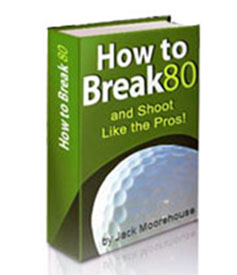
eBook
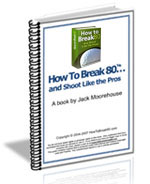
Physical Book
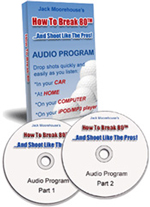
Audio Program
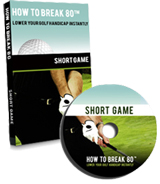
Short Game DVD
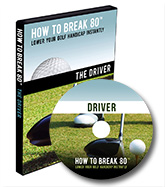
Driver DVD
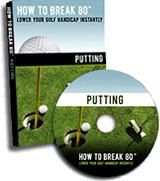
Putting DVD
|